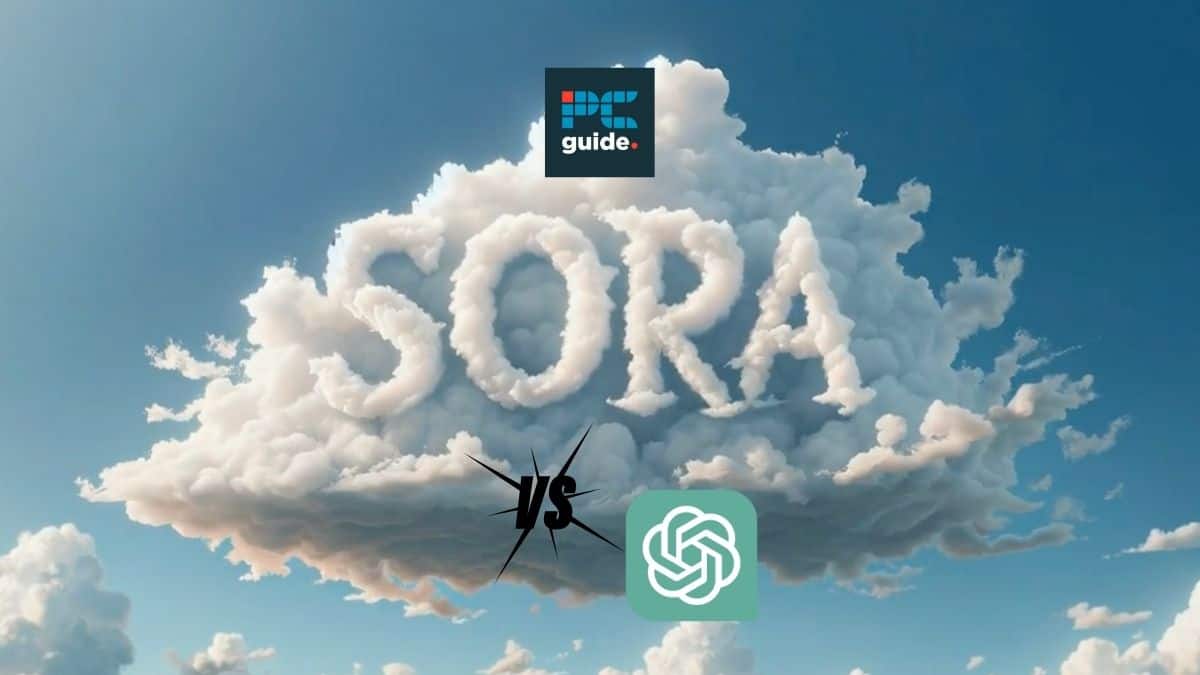Last Updated on
Following its exciting debut on X, we’re taking a look at Sora vs ChatGPT to compare and contrast OpenAI’s biggest ventures based on what we know so far. It was only so long before OpenAI instructed its artificial intelligence technology to create videos, and its latest groundbreaking generative AI venture is a text-to-video tool looking to take on the likes of Google Lumiere and Stable Video Diffusion. On the 15th of February 2024, OpenAI announced Sora, its first model that generates video based on text prompts: from what we’ve currently seen so, its results are almost scarily impressive.
The question is, how does Sora stack up against arguably the most influential AI chatbot, OpenAI’s ChatGPT? Find out some of the key similarities and differences between these two OpenAI models as we unpack the features and functionalities of Sora and ChatGPT.
Sora vs ChatGPT features
Simply put, Sora is an example of a text-to-video diffusion model. After inputting a text prompt, Sora can generate up to a minute-long high-fidelity video based on what you’ve described. Compared to other video-generating models, such as Runway AI, Sora stands out for its incredibly hyper-realistic creations. Moreover, its deep understanding of language enables it to create characters that display more authentic emotions than perhaps you would see on other generative video models. To quote OpenAI, Sora can “generate complex scenes with multiple characters, specific types of motion, and accurate details of the subject and background”. It’s unclear yet what other additional features and nuances the tool might have, as Sora isn’t actually out yet.
ChatGPT is the more mainstream model out of the two, and has gained so much popularity since coming out in November 2022 that it’s now probably one of the main things people might think of if you say ‘AI’. As a large language model chatbot built on the powerful GPT-4 engine, the main feature of ChatGPT is its ability to generate human-like responses in real time based on the user’s text prompts. It uses natural language processing to have conversations, write essays and recipes, as well as write and interpret a variety of coding languages. Recently, a text-to-image generator powered by DALL-E 3 has been built into ChatGPT, meaning it can now also create images based on your text prompts. If it sounds up your alley, we’ve done an in-depth explanation of how to use ChatGPT here.
What is Sora truly capable of? We’re not really sure.
Given that what’s been released to the press has come directly from OpenAI, so there’s quite high potential for bias. Additionally, there’s even more potential that the company is keeping the full capabilities of the model under lock and key, as it seems Sora has Big implications to blur the lines of film and AI.
Essential AI Tools

Content Guardian – AI Content Checker – One-click, Eight Checks
Best Deals

Jasper AI
Best Deals

WordAI
Best Deals

Copy.ai
Best Deals

Writesonic
Best Deals
Sora vs ChatGPT similarities and differences
From what we’ve seen from OpenAI so far, Sora and ChatGPT have quite different use cases. One is for creating video media content, and the other is a powerhouse all-rounder chatbot that can write essays, code, and now generate images. As two opposing models from the same company, it could be said that Sora and ChatGPT were not made to compete, but instead to complement each other and help maintain OpenAI’s spot as a dominating force in the AI industry. However, it’s also important to note that it’s possible a lot of Sora’s features have not yet been revealed to the public, and are therefore mostly unconfirmed. All we’ve really had is a select preview to tease the software.
| Feature | OpenAI Sora | ChatGPT |
|---|---|---|
| Text prompts to video | Yes | No |
| High-resolution video | Yes | No |
| Text to image | Yes | Yes |
| Animate existing images | Yes | No |
| Chatbot | No | Yes |
| Human-like conversation | TBC | Yes |
| Model built on | Sora | GPT-4 |
| Created by | OpenAI | OpenAI |
OpenAI Sora vs ChatGPT functionalities – how do they work?
When it comes to how these technologies work, Sora AI is its own model, but at this current time, OpenAI has only shared so much of the nitty-gritty details. In the technical report, Sora is a diffusion transformer described as a “generalist model of visual data” that has been extensively trained on images of variable durations, resolutions, and aspect ratios. In place of the ‘text tokens’ used by LLMs, Sora instead has visual ‘patches’ which are created from a compressed video input. Similar to ChatGPT, as Sora trains and continues to create more outputs, it will become a knowledgeable and more efficient model that’s better at what it does.
On the other hand, ChatGPT is built on GPT-4; a large language model that has been trained on massive amounts of text data sourced from the internet. When given a text prompt, ChatGPT generates a response by analyzing the input, predicting what text could follow from that input, and sampling from its language model to generate a coherent and relevant output. As it interacts with more users and receives feedback on its responses, the system continues to update and refine its algorithms – this technique is called self-supervised learning.
Is Sora better than ChatGPT?
We’ve not actually tested Sora, but based on our first impressions it certainly presents a prettier and shinier new package than ChatGPT. It certainly has the potential to become another major player in the generative AI video industry that’s likely to start taking off now that OpenAI has expressed its interest in it. However, while it has the initial wow factor, it’s unclear so far if it will be as popular or as useful as ChatGPT has become throughout mainstream media usage. At their cores, these are two different models that have very different use cases, but we’ll be eagerly anticipating the public release of Sora to see what it’s fully capable of compared to ChatGPT.



